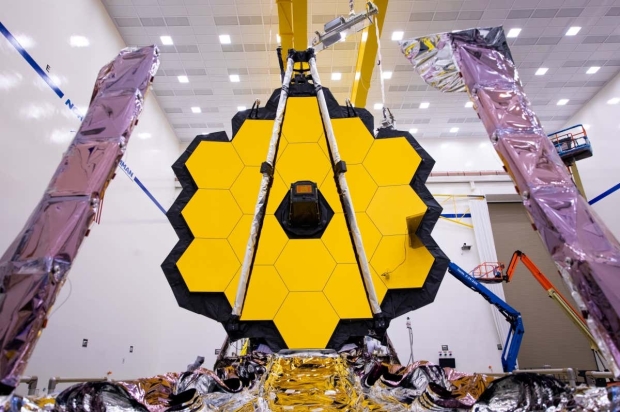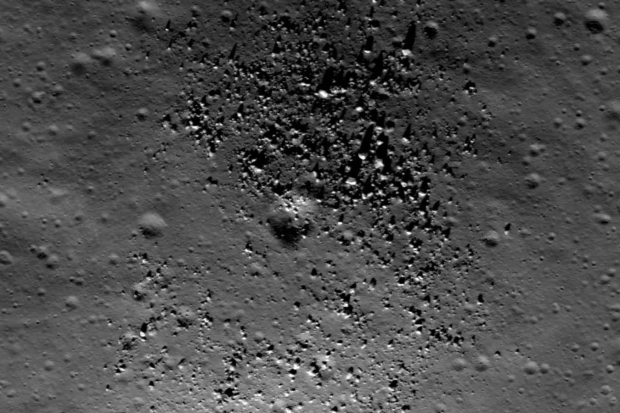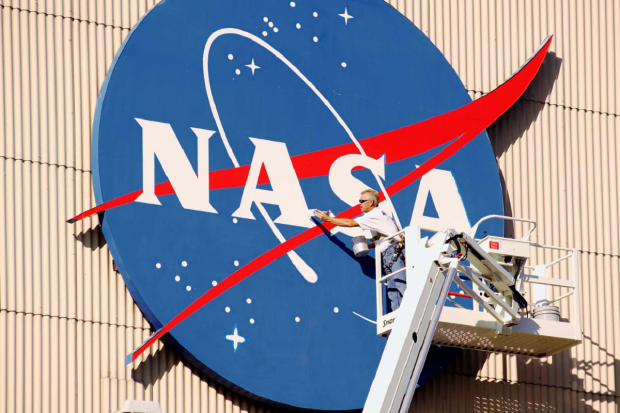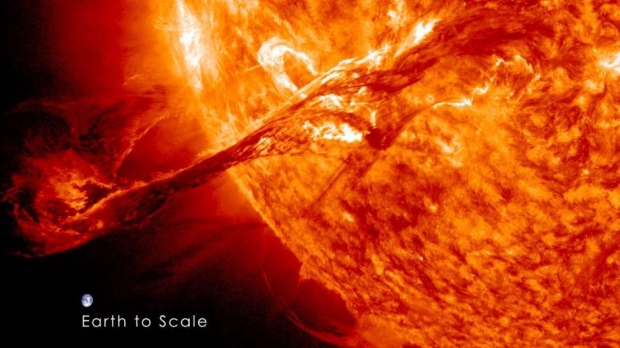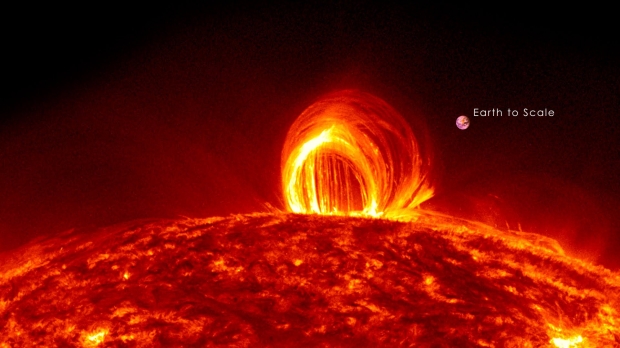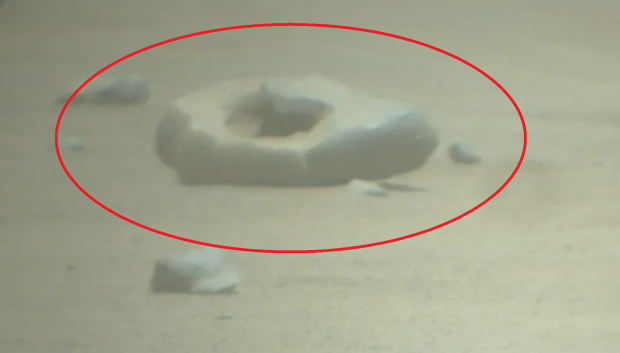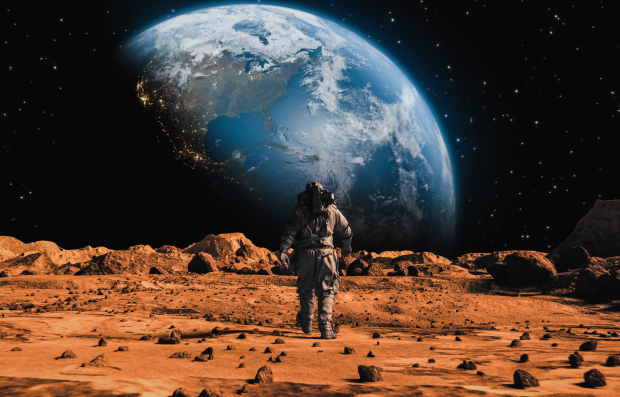Science, Space, Health & Robotics News - Page 48
NASA humanoid robot to do dirty work in Australia before it helps astronauts in space
NASA's humanoid robot named Valkyrie is going to be tested in Western Australia before its sent off to assist astronauts in space.
NASA has taken to its blog to announce that Valkyrie is heading to Woodside Energy, a Perth-based company that has entered into an agreement with NASA that stipulates the collaboration is "reimbursable", meaning Woodside Energy will pay for all of NASA's expenses and in return Woodside Energy will get to test the robot, collect relevant data and contribute to NASA's effort of developing "remote mobile dexterous manipulation capabilities" for taking care of uncrewed facilities.
NASA explains in its blog post that with the data Woodside Energy will be able to provide, engineers will be able to progress development on remotely operated robots that will eventually be on the lunar and Martian surface. These robots would enable constant progress to be achieved on both extraterrestrial surfaces from the safety of Earth. Valkyrie runs on two Intel Core i7 processors and a 1.9kWg battery, and will be working as an oil rig attendant.
NASA's Webb telescope photographs a fiery galaxy with a violent past in deep space
An example of galactic evolution has been photographed by the world's most powerful space telescope, the James Webb Space Telescope (JWST).
Introducing NGC 3256, a seemingly normal-looking spiral galaxy located approximately 131 million light years away from Earth within the constellation Vela. NASA and the European Space Agency's JWST has had its extremely powerful instruments pointed at NGC 3256, revealing more of the galaxy's violent past that contained a tragic but inevitable collision that occurred approximately 500 million years ago.
The spiral galaxy still bears the markers of that violent cosmic event, such as the galaxy's long tendril arms, and the young stars that were created as a result of the collision. Webb astronomers explained that Webb's images revealed how NGC 3256 was created in impressive detail, as the brightest portions of the image indicate luminous bursts of star formation that took place as the merger was taking place. These young stars are easily detectable by Webb's instruments as they shine brightly at infrared wavelengths.
Researchers discover a head-scratching mysterious radioactive rock on the far side of the Moon
A newly published paper details the discovery of what appears to be a large granite rock formation under the surface of the moon, but on the side we never see called the dark side of the moon.
The new study was published in the journal Nature and looked into a 30-mile-wide rock formation located that researchers believe is linked to ancient volcanoes that erupted billions of years ago. Researchers behind the study pointed out that any large bodies of granite discovered on Earth can be traced to a selection of volcanoes that have erupted and cooled.
Co-author of the paper, Matthew Siegler, explained that subsurface igneous rock deposits that are produced by cooled magma "are much bigger than the volcanoes they feed on the surface".
Webb telescope discovers oldest active supermassive black hole ever seen and it's 'tiny'
NASA has announced that its James Webb Space Telescope, the world's most powerful space telescope, has identified a supermassive black hole that existed just over 570 million years after the Big Bang, making it the most supermassive distant black hole discovered so far.
The previous record holder for the most distant supermassive black hole was a black hole detected in 2021 that measured 670 million years after the Big Bang. NASA explains on its blog post found on its website that this new record breaker identified as CEERS 1019 has also broken the record for the smallest supermassive black hole ever discovered in the early universe.
NASA writes that CEERS 1019 is relatively small compared to other supermassive black holes, clocking with 9 million solar masses, or 9 million times the mass of the Sun, which is tiny compared to other supermassive black holes discovered in the same era that typically have 1 billion solar masses.
NASA receives a phone call from a helicopter on another planet
NASA has announced that it's finally received a phone call from a helicopter that's currently stationed on another planet.
That helicopter is none other than Ingenuity, NASA's technology demonstration that arrived on the surface of Mars in February 2021 alongside the space agency's rover Perseverance. Ingenuity is the first human-made object that has taken flight on the surface of another planet, and since its first flight, it has been serving as a forward scout for Perseverance by taking photographs of the upcoming terrain, enabling NASA to map an efficient path for the rover.
However, NASA lost contact with Ingenuity after its 52nd flight, which occurred on April 26. While the flight was a success, NASA mission control wasn't able to communicate with the helicopter, with teams suspecting the communications dropout could be attributed to a Martian hill that stands between the helicopter and Perseverance. NASA's rover acts as a communications relay between NASA and Ingenuity, and on June 28, when Perseverance reached the summit of the hill, communications were finally re-established.
Continue reading: NASA receives a phone call from a helicopter on another planet (full post)
China warns of 'multiple natural disasters' expected to happen in July
Meteorological authorities have warned that China is expected to be battered by multiple natural disasters through the month of July.
According to meteorologists, China is about to be smacked with "multiple natural disasters" in the month of July, following officials issuing a warning to the population on Tuesday about potential rain-triggered disasters, according to the Xinhua news agency. The Xinhua news agency warned of "multiple natural disasters in July, including floods, severe convection weather, typhoons, and high temperatures".
Reports indicate that more than 400 emergency personnel have been sent to inspect the damage around affected areas. Furthermore, Chinese publications reported on Tuesday a railway bridge on the outskirts of southwestern metropolis Chongqing had collapsed after it was "damaged by the impact of mountain torrents". More than 460,000 people have been affected by the downpours, and 85,000 people have had to evacuate from their homes.
Continue reading: China warns of 'multiple natural disasters' expected to happen in July (full post)
NASA confirms recent solar flare was so big it could have affected people on the ground
NASA has confirmed that only a few days ago, the Sun released a solar flare so powerful that its radiation could have reached Earth's surface.
The space agency, along with the U.S. National Oceanic and Atmospheric Administration (NOAA), confirmed on Sunday, July 2, the Sun released an X-class solar flare, which can be traced back to a sunspot known as AR3354 bursting. Notably, this sunspot is approximately seven times larger than the Earth, and when it burst, it released the strongest type of solar flare, smacking Earth with ionized radiation that resulted in a 30-minute radio black over western parts of the United States and Pacific Ocean.
The flare was between the 10th and 14th biggest flare of this year's solar cycle, solar cycle 25, according to Solar physicist Keith Strong, who took to Twitter with the information. NASA's official Sun & Space Twitter account shared a video of the sunspot bursting, explaining, "Solar flares are powerful bursts of radiation. Harmful radiation from a flare cannot pass through Earth's atmosphere to physically affect humans on the ground."
Sun breaks 20+ year record for sunspots produced, raising major concern from scientists
Scientists from the U.S. National Oceanic and Atmospheric Administration (NOAA) and NASA are observing the Sun closely as it reaches its solar maximum.
New reports indicate that the Sun has broken a record that was set in 2002, and that record is for the most sunspots produced in a single month. Researchers have announced that the Sun produced more than 160 sunspots in June, the highest number of sunspots produced in a single month in 21 years. The Sun is currently going through its 25th solar cycle, and according to reports, researchers estimate the solar maximum, the period of the cycle where the Sun has the most sunspots, will arrive in a year's time.
Why is this important? Sunspots have the potential to release solar flares, which can hit Earth and impact critical infrastructure such as satellite communications, GPS, radio communications, and even electrical grids. The strong magnetic fields produced by these flares can cause satellite operators to lose track of their satellites, which could potentially lead to a catastrophic domino effect of space junk.
NASA's Mars rover photographs mysterious 'doughnut' on the planet's surface
NASA's Perseverance rover has been roaming the surface of the Red Planet since February 2021, and it has recently discovered a strange rock that's causing scientists to scratch their heads.
NASA's Mars rover has been exploring the Jezero Crater since it landed on the Red Planet, with the primary mission of the rover being to obtain a multitude of Martian samples that will then be transported back to Earth for further analysis. NASA hopes that Perseverance will be able to discover evidence, or a presence of ancient microbial life, possibly within the dried-up deltas all around the 28-mile-wide Jezero Crater.
Perseverance secured several samples throughout its travels, while also snapping as many pictures as it can of the surrounding Martian landscape. One of the pictures that has attracted the attention of not only the general public but also scientists from around the world is the image of a rock that appears to have a vacant circle at its center, earning it its "doughnut" name. The picture was captured with Perseverance's SuperCam, which identified that the rock was 324 feet away from the rover.
NASA is paying four people to be locked in a Mars simulator for just over a year
Before NASA puts humans on the surface of Mars, the space agency wants to test how humans would cope living in a simulated version of the Mars surface for a year.
Four individuals have been selected to undertake the adventure of being locked in a Mars simulation for 378 days, and throughout this time, the participants will be learning how to live, work together and cope with all of the issues that the Martian surface will present. The participants will be inducted into a strict workout routine, have numerous duties/responsibilities, perform simulated spacewalks to harvest crops, and have to endure random communication drops that will isolate them from the outside world.
The four volunteer participants are Kelly Haston, Ross Brockwell, Nathan Jones, and Anca Selariu. These individuals were chosen specifically for their qualifications which span biomedical science, biochemistry, research science, structural engineering, and more. So, how much will the participants be paid for their time? According to the Houston Chronicle, NASA is paying $10 per hour for all waking hours, but up to 16 hours per day, which works out to about $60,480 for the 378-day mission.



